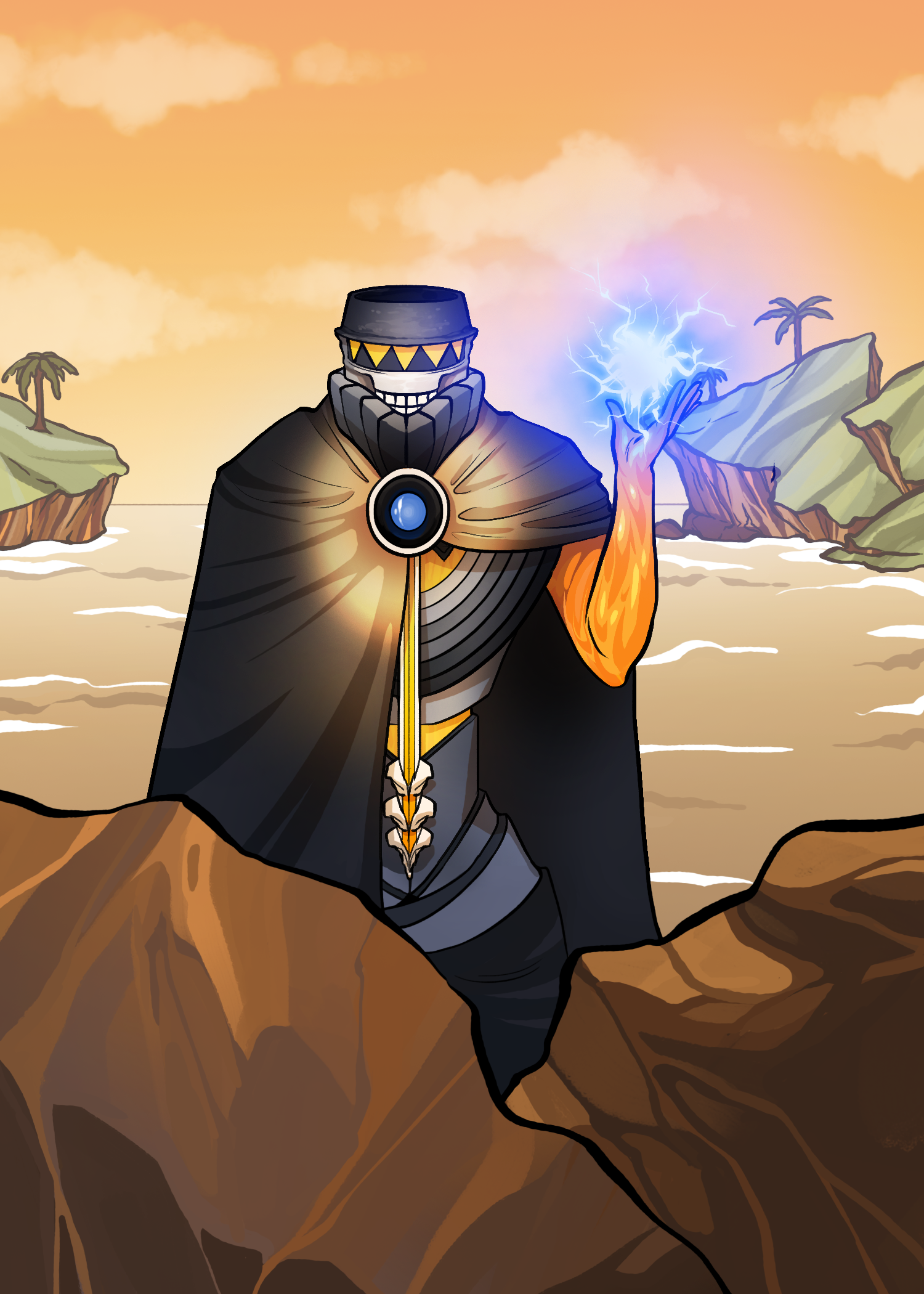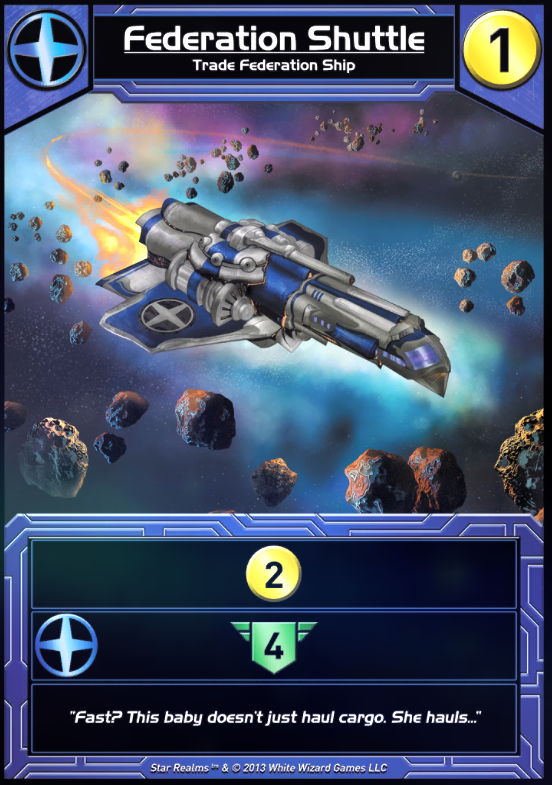Richard III is one of the most difficult characters to play in Captain’s Gambit. Your opponents fear your immense power, and will turn against you if they catch even the smallest hint of your identity.
To maximize your odds of winning, you must prepare plans, contingencies and follow-ups so that you are never caught off-guard. Once you understand Richard III, you’ll find opportunities and leads in other captains as well - improving your mastery of Captain’s Gambit as a whole.
Overview
Your objective as Richard III is to be the last one alive. Your first tip is that you don’t have to necessarily be the one killing everyone else. Romeo and Juliet, for example, can make life much easier for you. But there will likely come a time you must dirty your own hands, which is where your Reveal ability comes in.
Before your action on your turn, you may Reveal to target all opponents with less health than your energy.
Deal 10 damage to each of them.
The power level of this Reveal ability depends entirely on your planning skill. Unlike a captain like Prospero, who must survive after Revealing, Richard III threatens to murder captains instantly.
That danger means that captains will turn aggressive much earlier against potential Richard players than they would against Prospero, even though their abilities look similar at first glance.
As such, it’s often a mistake to carry over your Prospero strategy when playing Richard III: the circumstances you seek have very few similarities aside from a moderate-high energy count.
So, today, we approach Richard III from the perspectives of rules, plans and contingency plans. This should provide you with a general heuristic that you can then deviate from during actual combat.
Cheat Sheet
RULES
Richard III isn’t in the game.
You don’t have a Reveal ability.
You don’t have to kill four to kill three.
Control the fear.
PLANS
Plan A: Let everyone else kill each other.
Plan B: Find an ally.
Plan C: Let the average health at the table drop.
Plan D: Find a chain.
Plan Z: Rush energy and Reveal.
CONTINGENCY PLANS
If Prospero is definitely in the game…
If someone is looking for allies…
If nobody wants to listen to reason…
If nobody wants to hurt each other…
If everyone thinks you’re Prospero…
If everyone thinks you’re Richard III…
If you’ve Revealed and the game isn’t over…
RULES
Richard III isn’t in the game.
They fear you, and rightfully so. The consequence of Richard threatening unspeakable destruction is that early on, all captains will be on high alert for any individual who may pull that global-damage trigger. As long as the table keeps your Reveal effect in mind, you will lose every time.
Your only recourse is to make others either believe or hope that you are not in the game. The table does not need to be fully convinced; it is enough to maneuver captains into positions where they must say to themselves, “If Richard is in the game, I might lose. But if I don’t stop Lady Macbeth right now, I definitely lose.”
Give players hope that you’re not in the game by diminishing your threat - or by highlighting the threats of other captains. Incite such great fear that your opponents will find themselves facing better odds if they give you an opportunity than if they waste too many resources keeping a potential Richard III in line. Make them doubt Richard even exists.
You don’t have a Reveal ability.
Discipline yourself. You will not gain 11 energy and smite down seven combat dummies at once. Even random number generators would put an end to that plan, let alone a group of seasoned captains with enough ambition to tear the universe in half.
Your victory will be messy. It will not arrive the way you think it will, and often, it will not occur when you Reveal. Your victory comes from seeds of doubt, sparks of anger, flashes of greed, captains willfully ignoring you to focus on their narrow goals. Until you can move undetected, you must believe you have no Reveal.
It will come in the final act.
You don’t have to kill four to kill three.
Those who look for perfect moments only succeed at denying themselves imperfect victories. Respect the willpower of your opponents and recognize when this opportunity may be your last. Your goal is not to kill every captain at once - it is to be the last captain remaining. Focus on that goal and recognize the paths you may take to get there.
Control the fear.
Your opponents are fearful, but this fear is malleable. Turn fear about Richard III into fear of Prospero, who doesn’t need to worry about health; or Lady Macbeth, who doesn’t need to worry about energy; or Portia, who can win with just a single unassuming Strike. In this galaxy, fear leads to violence, and death is your goal.
You must control fear as such that all preventative measures lead to your victory. Bruise all bloody captains in case they’re Lady Macbeth, then pivot to low-blood captains to prevent Portia from taking the snipe. Suddenly, you may start your next turn with 7 energy and a fortuitous Reveal in line.
PLANS
Plan A: Let everyone else kill each other.
Your first plan should never involve your own hands. You do not want attention, and often, captains will drop just fine without your intervention. Observe what captains may do to each other and see who can drop without your intervention.
This plan alone will never lead you to victory, obviously. But you have the luxury of setting perfect-world plans due to your layers of backups and contingencies.
Plan B: Find an ally.
Many captains seek security. Provide temporary comfort by asserting a complimentary identity. If Iago or Puck wants to win with Prospero, of course you can oblige. If Romeo believes you are Cordelia, help him eliminate one enemy at a time.
Energy and damage are both useful for your goal, so take on whichever dynamic makes you a welcome presence among others.
Plan B: Let the average health at the table drop.
If your autocharge only brings you to 6 or 7 energy, players may ask that you dissolve suspicion by spending your energy. However, they are unlikely to attack you simply for having 5 or 6 energy. Incite enough violence to bring the table’s health down and bring your Reveal plan closer to fruition.
Plan C: Find a chain.
How do you make Barrage deal 14 damage? Kill Cordelia’s mark.
When does your Reveal kill 3 captains, if only one captain has low health? When Juliet has 3 health and Romeo is marked by Hamlet.
You will not always find fortuitous lineups. However, a bound pair of dragons are always in the pool of potential captains, and often you must contend with Hamlet/Brutus/Cordelia as well.
Even if unlikely to occur, you would be foolish to keep your ears closed to hints regarding who is bound to another. It only takes one correct assumption to win you the game, as few captains can anticipate moments when your Reveal will murder otherwise healthy captains.
Plan Z: Rush energy and Reveal.
After every other moment has passed, you may find yourself rushing to hoard energy before your story ends in victory or defeat. This is not your ideal place to be, as all pretense about your identity will melt away. However, you must recognize these moments when you arrive, and have the ability to calculate just how much damage you can handle before you Reveal.
Remember that you do not spend energy to Reveal, and you still have your action for the turn when you do. Get comfortable slinging a series of final blows to close out the game after your Reveal.
CONTINGENCY PLANS
If Prospero is definitely in the game
You will struggle to deflect away from energy-related fears if a clear Prospero is among you. You have two options: pretend to be Prospero’s ally to smoke him out of hiding, or use him as a shield to make your own energy count look harmless in comparison.
If someone is looking for allies
Be that ally. It is not terribly difficult to backstab others, and often, forming an alliance can grant you leverage to incite further violence at the table.
Be wary of outright declaring a false identity if you suspect that a real Puck, Iago or other devotee is at the table - unless you can spin your story to subtly convince them that you are simply borrowing that identity for a shared victory later.
If nobody wants to listen to reason
Ride the violence. Your own health does not affect the power of your Reveal. If getting hurt is what it takes to bring the mutual health down at the table, let it happen.
Sometimes it is best not to make warnings about captain identities; if captains seek violence for its own sake, or perhaps due to personal vendettas, bringing up identities may remind players to fear Richard III.
If nobody wants to hurt each other
This is one of the very few situations where gathering 10 (11 after autocharge) energy may actually be appropriate. More realistically, though, you may bring up the threat of Prospero and declare that all captains should bring each other’s health to 7 or lower. This would make your Reveal easier as you would then only need 7 (8) energy yourself.
If everyone thinks you’re Prospero
Prospero’s two strategies are to deflect from his identity or to gain support for his Reveal. Your advantage is that Prospero’s typical method of deflecting attention is to attack other captains. Bringing the total health pool low works well for your Reveal, so it is often easier to give up your energy climb until later if players begin to grow suspicious of you.
Another simple strategy is to invite some attacks, provided nobody suspects that you are Richard III halfway through a round of Strikes. Prospero can’t reveal at low health, but you can. If resting at 5 health is all it takes to make the table ignore you, take that opportunity.
Beware: if you are against others who have read this guide, you will need to escalate your tactics and consider other methods of deflection.
If everyone thinks you’re Richard III
De-escalate into a Prospero identity if possible, or perhaps a pacifist Puck, or even Imogen/Rosalind if you can act convincing enough. Captains will more readily accept an alternative identity than they will accept a flat denial.
This is often a case where you must give up social ground to survive for another round. You may need to mask yourself as a convincingly bad Prospero (for example, pretending to be too obvious about looking for allies) in order to avoid outright death. In these cases, you may need to accept that you can no longer gain energy without suspicion.
If you’ve Revealed and the game isn’t over
First, recognize that this will be the case more often than not. Prepare yourself for the final duel by Networking up some Barrages or Wildcards. You can also collect Shields and bait your opponent into fearfully bluffing one.
If possible, try to waste your opponent’s resources by timing your Reveal to come immediately after that captain had just spent energy. You have the advantage of choosing when to enter this duel; prepare accordingly.
Richard III is difficult to pilot, perhaps one of the more difficult characters in Captain’s Gambit. Your greatest enemy is your own reputation - you must spend your rounds wisely to defuse or redirect fears of your presence while slowly opening up the pathways for any number of victories. Like many others in Captain’s Gambit, Richard III cannot execute one plan, but instead prepare for multiple potential opportunities at once.
Stay hidden, keep the game shifting in your favour, and prepare to savour your well-deserved spot on the throne.
















